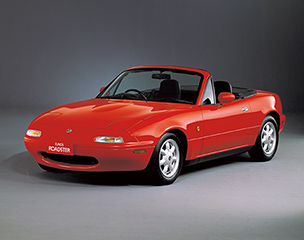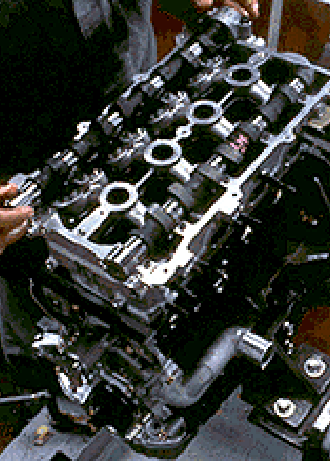Demand for improved safety finally drove the original lightweight sports cars of the 1970s to extinction. Achieving the required safety performance while keeping vehicle weight down was just as challenging for the MX-5’s developers. Computer analysis, which had been nonexistent in the 1970s, played a key role in the revival of the lightweight sports car. It is no coincidence that the MX-5 program manager was an expert in vehicle body engineering. By fully utilizing the latest computer analysis technologies, the team managed to build a light and rigid body which met modern safety requirements.
As Japan has a rainy season each year, there are relatively few convertibles on the roads. However, Mazda’s development team chose to remain faithful to the “Jinba Ittai” concept and purposefully picked a manually operated soft top. They also rejected proposals for a 2+2 seat layout in order to concentrate on a pure two-seat roadster. These and other difficult decisions ensured the MX-5 would be as light as possible.



